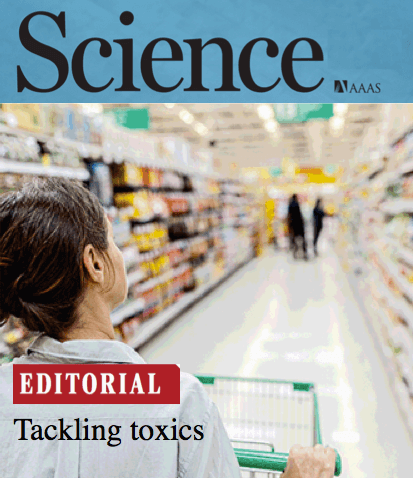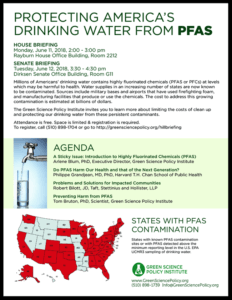July 2018: Ten Years! Can You Believe?
In this edition:
- From Beagles to the Bay–Pet Pesticides are Polluting our Water
- A Good Reason to Turn off Electronics: Flame Retardant Exposure
- Are There Batteries in Your Smoke Detector?
- Sleep Soundly Without Flame Retardants
- Calendar
Can you believe it’s been more than ten years since we began our flame retardant work? A veritable roller coaster of ups and downs have ensued, with thankfully many successes so that toxic flame retardants are no longer needed in our nation’s furniture and most children’s products. We are planning a 10th Anniversary Celebration of Big Ideas here in Berkeley to thank our many friends and colleagues who have provided invaluable collaboration and support. Stay tuned for more information.

Our scientific publications and policy accomplishments around flame retardants, highly fluorinated chemicals (or PFAS), and the Six Classes concept have been guided by Big Ideas leading to positive change. For example, the class concept helps purchasers, large and small, understand the most harmful chemical families and make better choices for healthier products and environment. This Big Idea is described in my editorial in Science Magazine: Tackling Toxics.
During our recent fun and fruitful trip to Washington DC, Tom, who leads our Six Classes work, and I met with staff from 80 different House and Senate offices to discuss reducing harm from PFAS contaminating the drinking water of tens of millions of Americans. We support allowing domestic airports to choose whether or not to use PFAS in fire-fighting foam. This change, which would protect drinking water near the nation’s airports, passed the House by 393 to 13 and is now in the Senate.

Our Hill meetings made me appreciate the hard-working staff on the Hill in Washington DC and the positive difference they can make for a healthy environment.
On a personal note: my small downstairs studio apartment in the Berkeley Hills will be available August 1. I prefer to rent to a friend or a friend of a friend. (My house is above UC Berkeley, and the path around it leading to the studio is rugged.) Get in touch if you know someone appropriate for such a rental.
Also, I will take a hiking vacation near the Annapurna range in Nepal during the second half of December. Forty years ago, I led the first American climb of Annapurna I, considered among the most difficult of the world’s high mountains. We might be inviting a few others to join our Annapurna walking adventure, so get in touch for more information if you’d be interested in joining me in Nepal.
We wish you a very happy and productive summer.
Arlene and the Green Science Policy Team
From Beagles to the Bay–Pet Pesticides are Polluting our Water
We want our pets to be healthy, but could something that keeps them well be harming ecosystems? Many topical flea treatments, such as Frontline and Pet Armor, contain a pesticide called Fipronil as the active ingredient. Although Fipronil does eliminate fleas, scientists at the San Francisco Estuary Institute (SFEI) have found it is harming the food web in the San Francisco Bay.

How does Firpronil find its way into the water of the Bay? The pesticide gets on our hands and laundry, and when we wash them, it goes down the drain into wastewater treatment plants, where it ends up in Bay sediment. SFEI senior scientist Rebecca Sutton explains that Fipronil harms organisms at the bottom of the bay. According to Sutton, “that’s the base of our food web. So, if those critters experience impacts, it could go up and harm our fish and our wildlife.”
A recent study found Fipronil at all tested sewage treatment plants at concentrations between 14 and 49 parts per trillion; above the U.S. EPA’s recommended level of 11 parts per trillion.
How can you protect both your pet and the environment? One way to reduce the risk of fleas is to vacuum your home and your pet’s bedding often, comb your pet’s fur with a fine-tooth flea comb, and drown any fleas you find in a cup of water. If your pet still needs flea treatment, consider oral or topical flea treatments which do not contain Fipronil. Examples are Revolution, Paradyne, and others containing the active ingredients selamectin, s-methoprene, or pyriproxyfen.
A Good Reason to Turn off Electronics: Flame Retardant Exposure

Flame retardants added to plastic enclosures around electronic products are not chemically bound to the plastics, and can migrate out into air and dust. Many studies have measured flame retardants in the dust and air in places where electronics are present. But it’s been hard to know how much of the flame retardants in the samples came from the use of electronics in these rooms versus the furniture, carpet, etc. Until now.
A recent study evaluated air and dust samples in four rooms of a newly constructed building in the Czech Republic. To measure the relative flame retardants off-gassing from building materials, furniture and carpeting, and electronics, sampling occurred at key intervals: 1) in newly constructed but empty rooms, 2) after carpet and furniture were installed, 3) after computers were installed, and 4) after computers were switched on.
No significant increase in levels of flame retardants in the air was found after the computers were installed, but after they were switched on, the emissions of halogenated flame retardants increased by 886%, from 167 pg m-3 to 1480 pg m-3. The study authors, from the Czech Research Center for Toxic Compounds in the Environment, cautioned that this concentration was relevant in terms of long-term human exposure for people who work most of the day in offices or computer rooms.
Are There Batteries in Your Smoke Detector?
Have you ever removed the batteries from your smoke detector because it annoyingly went off while you were cooking or showering, or for no apparent reason at all?

Good, functioning alarm systems will protect us from fires in our homes; a more effective and healthier alternative to adding flame retardants to furniture.
Photoelectric smoke alarms are a better alternative than the more commonly-used ionization smoke alarms – they can detect smoldering smoke and do not give so many false alarms.
Photoelectric alarms are now required in Massachusetts, and data shows that there has since been a decrease in fire deaths. You should periodically check your smoke alarms to verify that they are functioning. If you have disabled your smoke alarms because of frequent false alarms, you might want to consider installing a photoelectric alarm.
Sleep Soundly Without Flame Retardants

According to a recent peer-reviewed study in Environmental Pollution, switching to nap mats without harmful flame retardants can reduce young children’s exposure to these problematic chemicals. Scientists at Indiana University swapped flame retardant free nap mats for ones with flame retardants. They measured concentrations of flame retardants in dust and air in pre-schools before and after the swap with results as shown in the diagram on the left. Also, they found a shift from phased-out PBDEs to Firemaster® mixtures in the dust (another example of a regrettable substitution, which our Six Classes concept is designed to prevent).
This study demonstrates that pre-schools and parents can reduce children’s harmful exposure by purchasing flame retardant free products. Also, since the use of these chemicals in products such as nap mats or upholstered furniture does not provide a fire safety benefit, manufacturers can choose not add them to their products.
Calendar
August 29, 2018: The Toxics Tableau: Limiting Harmful Chemicals in our Environment
The Chemical Class Approach Towards Healthier Products and People, Arlene Blum. Green Science Policy Institute
The Lingering Legacy of Lead: Why a Little Bit of Lead is too Much, Bruce P. Lanphear, Professor, Children’s Hospital, Simon Fraser University
1:00- 4:00pm, The Banting Theatre, Sir Frederick Banting Research Centre, Health Canada
251 Sir Frederick Banting Driveway, Tunney’s Pasture, Ottawa, Canada.
Questions: Lorraine Seed
August 30, 2018: The Science and Policy of Organohalogens Workshop, ISES-ISEE 2018
1:30 to 5:00 pm Auxilary Workshop led at the Joint Annual Meeting of the International Society of Exposure Science and the International Society for Environmental Epidemiology (ISES-ISEE 2018).
Shaw Centre, 55 Colonel By Dr, Ottawa, ON KIN 9J2, Canada.
Open to all conference participants. Speakers are:
Linda S. Birnbaum, Director, National Institute of Environmental Health Sciences and National Toxicology Program
Miriam Diamond, Professor, Department of Earth Sciences, University of Toronto
Tony Fletcher, Professor, London School of Hygiene & Tropical Medicine
Arlene Blum, University of California, Berkeley, and Green Science Policy Institute
Tom Bruton, Scientist, Green Science Policy Institute
Click here for more information about ISES-ISEE 2018.
Receive Updates By Email
Subscribe to our monthly newsletter and get these updates delivered right to your inbox!